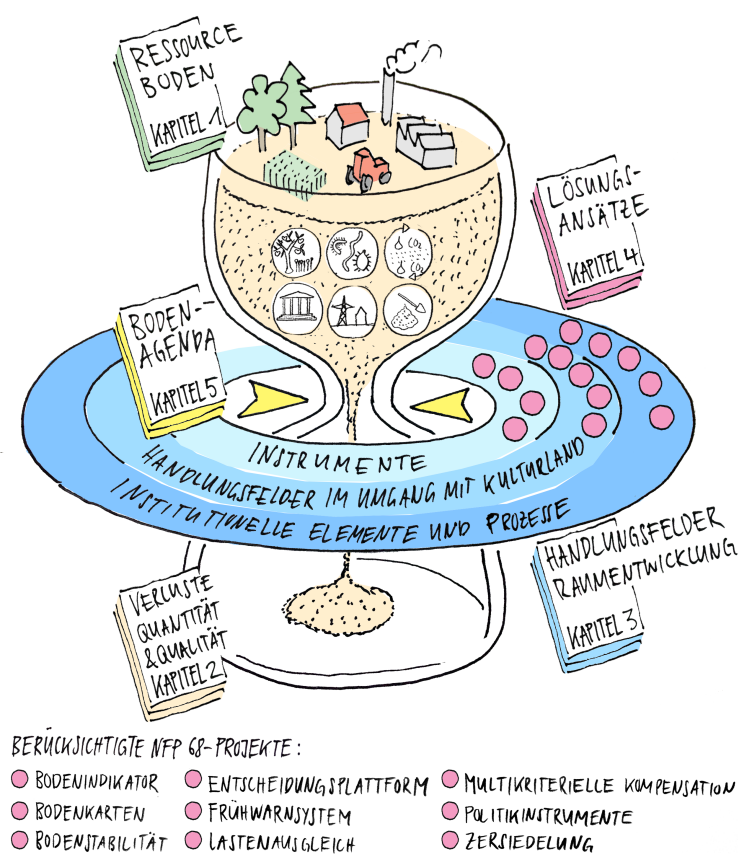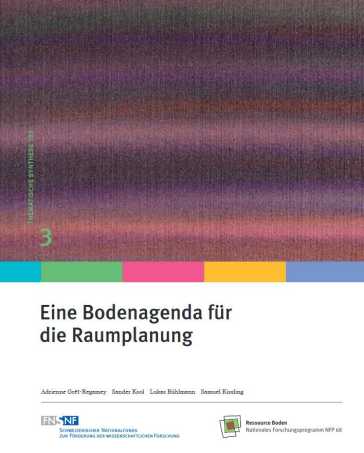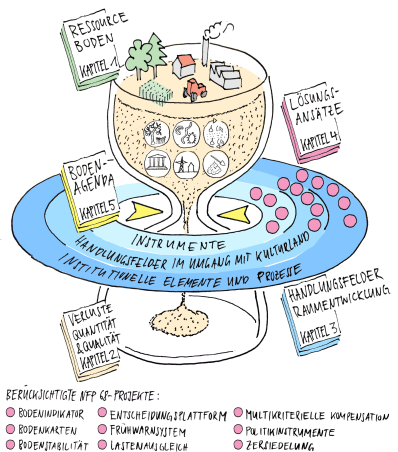New publication: An agenda for soil management in spatial planning
The thematic syntheses of National Research Programme 68 (NRP 68) presents concepts and strategies to secure soil as a resource and its functions and ecosystem services in the long term. The third volume in the series describes the decisive role of spatial planning for the sustainable use of soil.

The key findings of the NRP 68 are summarized in this new publication, providing insight and guidelines on the best spatial planning strategies for sustainable soil management in Switzerland. Adrienne Grêt-Regamey, Sander Kool, Lukas Bühlmann and Samuel Kissling created the Thematic Synthesis 3, which is dedicated to designing an agenda for soil management in spatial planning based on the knowledge generated by the different projects of the NRP 68.
Although the Swiss spatial planning legislation explicitly states sustainable use of soil as its first goal, the Swiss plateau is currently under high pressure of land change and experiences high rates of soil sealing, especially at the expense of agricultural land. The first stage of the revision of the Spatial Planning Act (rpg1) aimed at a reduction of land consumption by severely limiting new construction zones. Nevertheless, the loss of arable land continues to increase, particularly because of construction activity outside the construction zone. These construction activities for the most part take place on soils highly suitable for agriculture. Up to now, planners often took little notice of the loss of soil quality and, hence, the loss of various soil ecosystem services.
The National Research Program (NFP 68) examined how to make the qualitative aspects of the soil tangible so that they can be taken into account in spatial planning decisions in an appropriate manner. The Soil Index point system that is proposed and described in detail in Thematic Synthesis 3 represents a major step towards sustainable spatial development considering not only soil quantity in terms of surfaces but soil quality. The index links various soil functions to ecosystem services (like natural hazards management, water filtration and erosion protection, among others), covering the multifunctionality of soil. Additionally, the ecosystem services approach facilitates the communication of how we benefit from soil to audiences outside the soil scientific community.
The book is available online (in external pageGermancall_made). A hardcopy in French is also available, but not yet online.


